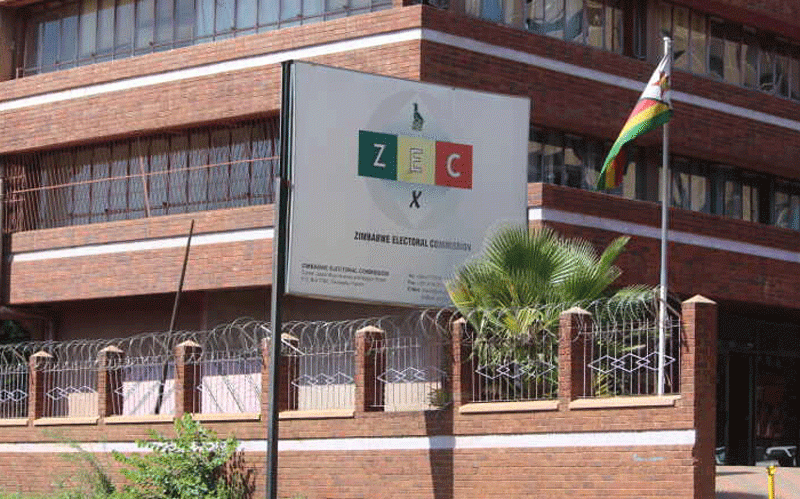
Harare’s Central Business District (CBD), akin to numerous urban centres worldwide, grapples with escalating office vacancies as businesses migrate to suburban office parks.
This phenomenon, prevalent in many cities, necessitates innovative solutions to repurpose these voids.
By examining successful strategies from developing and developed countries, including African nations, we can explore transformative solutions for Harare’s CBD.
This analysis delves into the effectiveness and sustainability of these strategies, evaluating their applicability to Zimbabwe’s unique context.
Mumbai, a bustling metropolis in India, faced similar challenges with businesses relocating from its congested and costly CBD.
The city adopted a mixed-use development approach, particularly evident in the transformation of old textile mills in Lower Parel.
These former industrial sites now thrive as vibrant spaces combining residential units, commercial offices, retail outlets, and entertainment facilities.
This strategy has revitalised the area, drawing businesses and residents back to the urban core.
- Environmentalist hails BCC new parking system
- Currency volatility takes toll on property developers
- Interview: Masholds acquires more land banks in strategic diversification drive
- Zimbos turn to the bottle as economy bites
Keep Reading
However, the sustainability of this model is under scrutiny due to surging property prices and potential gentrification, which could displace lower-income residents and small businesses.
Long-term success hinges on ensuring affordable housing and inclusive development to maintain social equilibrium.
In Brazil, São Paulo addressed CBD vacancies by repurposing old office buildings into residential and cultural spaces.
The city’s “Cultural Corridor” initiative transformed several vacant buildings into museums, art galleries, and cultural centres.
This endeavour not only preserved architectural heritage but also stimulated the local economy by attracting tourists and local visitors.
While this transformation has significantly contributed to economic revitalisation, the long-term sustainability of this model depends on ongoing investment in cultural programs and infrastructure.
Without sustained financial and community support, these spaces risk falling into disrepair or losing their cultural significance.
Mexico City took a different approach by incentivising the conversion of vacant office buildings into affordable housing.
The government provided tax breaks and subsidies to developers who undertook these conversions, addressing both the housing shortage and the surplus of vacant buildings.
This policy has successfully increased residential occupancy in the CBD and provided more housing options.
However, challenges remain in ensuring the quality and affordability of these housing units. Continuous government oversight and incentives are necessary to maintain housing standards and prevent new forms of urban decay.
Detroit, in the United States, offers a notable example of adaptive reuse.
The city has transformed vacant office spaces into residential lofts, hotels, and co-working spaces as part of its broader urban renewal strategy.
Projects such as the revitalisation of the historic Book Tower and the transformation of Michigan Central Station into a mobility innovation hub illustrate how Detroit has turned vacancies into vibrant, multifunctional spaces. Despite these successes,
Detroit still faces significant challenges related to economic inequality and population decline.
The sustainability of this model depends on broader economic recovery and inclusive growth policies that address the needs of all residents.
Tokyo has effectively managed CBD vacancies by focusing on vertical urbanism.
The city has developed multi-purpose skyscrapers that combine offices, residential apartments, shopping malls, and public spaces within the same building.
Projects like Roppongi Hills and Tokyo Midtown exemplify this integrated approach, offering comprehensive living and working environments that attract people back to the city centre.
These developments are considered highly sustainable due to their thorough planning and incorporation of green technologies.
However, the high costs associated with such projects may limit their replicability in other cities or within different socio-economic contexts in Tokyo itself.
Berlin has creatively addressed its vacant CBD spaces through the concept of “Zwischennutzung” (interim use), allowing temporary utilization of vacant buildings for artistic, cultural, and entrepreneurial purposes.
Spaces like the former Tempelhof Airport and the Aufbau Haus have become creative hubs, hosting start-ups, artists, and community events, fostering a dynamic urban culture.
The sustainability of this model hinges on the flexibility and adaptability of spaces to evolving needs over time.
While successful in the short term, these spaces often require further permanent transformations to remain viable in the long term.
In South Africa, Johannesburg’s Maboneng Precinct exemplifies how mixed-use redevelopment can revitalise a neglected area.
Former industrial and office buildings have been converted into a lively district with art galleries, shops, restaurants, and residential units.
This transformation has attracted diverse businesses and residents, fostering economic revival and cultural vibrancy.
However, as property values increase, the area faces the risk of gentrification, potentially displacing the original lower-income communities.
Ensuring long-term sustainability will require policies that balance development with social equity, such as affordable housing mandates and community engagement in planning processes.
Nairobi, Kenya, has seen a similar transformation in its Westlands area, where former office spaces have been converted into mixed-use developments.
This has brought economic revitalisation and increased urban vibrancy.
Nonetheless, the sustainability of these developments is challenged by infrastructural constraints and socio-economic disparities.
Continuous investment in infrastructure and inclusive policies is essential to maintain the momentum of urban renewal.
Some cities, like Detroit, have undergone double transformations over time.
Detroit initially faced industrial decline leading to significant vacancies, followed by a wave of adaptive reuse.
As the city continues to evolve, it faces the need for a second transformation to address ongoing economic and social challenges.
This iterative process underscores that urban renewal often requires sustained effort and adaptation to new realities.
Drawing from these global examples, Harare can consider several transformative strategies for its CBD.
Mixed-use developments, which combine residential, commercial, retail, and entertainment spaces, can attract diverse user groups and increase economic activity.
Converting vacant offices into affordable housing with government subsidies and tax incentives can address housing shortages and repopulate the CBD.
Repurposing buildings into cultural and creative hubs, such as art galleries, theatres, co-working spaces, and innovation labs, can foster a vibrant cultural scene.
Adopting vertical urbanism by developing high-rise buildings integrating multiple uses can optimise land use. Integrating green spaces and public amenities can enhance liveability, making the CBD more attractive to residents and visitors.
Encouraging adaptive reuse and interim use of vacant buildings for short-term projects and events can generate temporary economic activity while keeping the buildings functional.
Finally, relocating government offices and educational institutions to the CBD can provide a stable and continuous flow of people, stimulating ancillary businesses and boosting the local economy.
Successful implementation of these strategies in Harare will require strong policy support and incentives, such as tax breaks, grants, and subsidies for developers and businesses.
Public-private partnerships can pool resources and expertise, ensuring comprehensive and sustainable redevelopment projects.
Engaging with local communities through participatory planning processes ensures that redevelopment projects meet the actual demands of the population, fostering community buy-in and support. Incorporating sustainable practices, such as green building designs, renewable energy, and waste management systems, can make the CBD more resilient and environmentally friendly.
Harare’s CBD can transform its vacant office spaces into vibrant, multifunctional areas by adopting strategies from cities worldwide.
The process necessitates a mix of short-term and long-term strategies, supported by policy frameworks, community engagement, and sustainable practices.
By learning from global examples, Harare can create a dynamic, resilient CBD that meets the needs of its residents and businesses, paving the way for a brighter urban future.
*Dr Bekithemba Mpofu is the Intergrated Properties chief real estate officer










